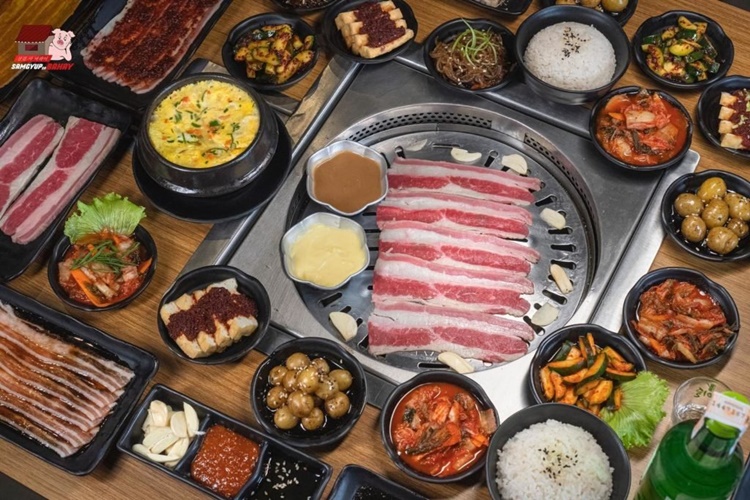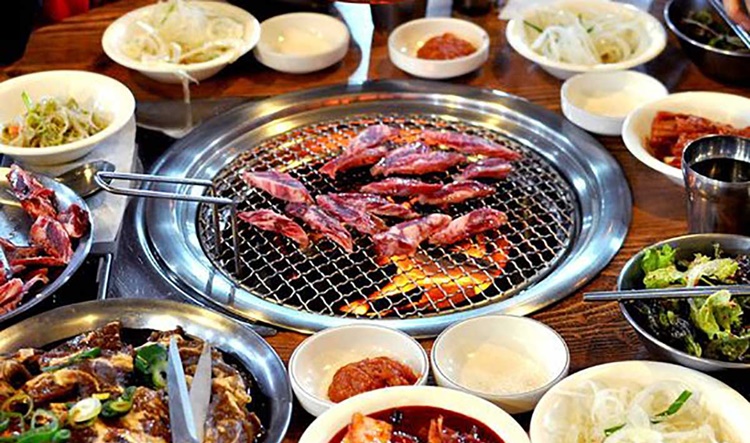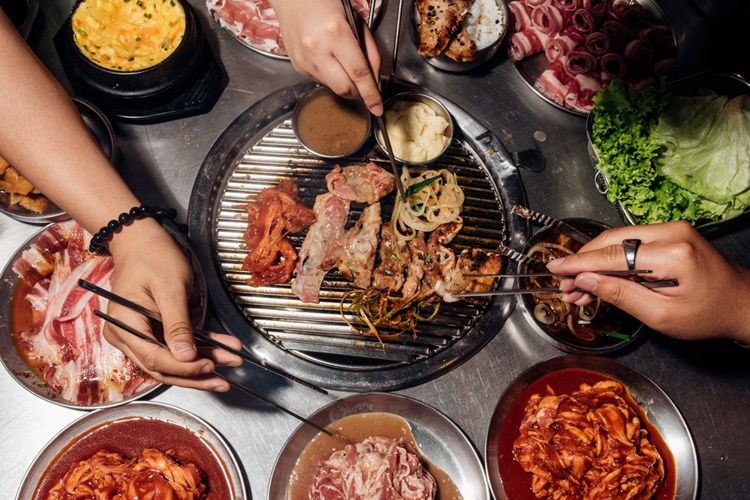SAMGYEOPSAL – Here is the history and how this Korean dish rise to popularity in the Philippines.
Samgyeopsal, a Korean dish of grilled pork belly, has gained popularity in the Philippines. This dish, known for its rich flavors and interactive dining experience, has captured the hearts and taste buds of Filipinos.
This Korean dish meaning “three-layer meat,” emphasizes the layers of meat and fat in pork belly slices. Initially a staple in Korean cuisine, it has now become a favorite in the Philippines. It refers to thick, unseasoned slices of pork belly, grilled at the table.
Diners typically wrap the cooked meat in lettuce or perilla leaves, adding sauces and side dishes to enhance the flavor.

HISTORY
The dish begins in South Korea during the 1980s. As the country’s pork production increased due to government policies encouraging alternatives to beef, it emerged as a popular menu item.
It was first mentioned in Korean media in 1984, initially called “segyepsal,” and became an official dictionary entry after 1994. The dish quickly became integral to Korean dining culture, particularly in office settings.
TYPES OF SAMGYEOPSAL
- Traditional Samgyeopsal: Unseasoned pork belly slices, grilled to perfection.
- Spicy Samgyeopsal: Pork belly marinated in spicy sauces for an added kick.
- Fusion Samgyeopsal: Combines Korean and Filipino flavors, such as adding Filipino spices or side dishes.
SIDE DISHES
- Kimchi: Fermented cabbage with a spicy kick.
- Sliced garlic and onions: Grilled alongside the pork.
- Ssamjang: A savory dipping sauce made of fermented soybean paste.

POPULARITY
The rise of ‘samgyupsal’ in the Philippines can be linked to the Hallyu wave—the global spread of Korean culture. Korean dramas and K-pop introduced Filipino audiences to Korean cuisine, creating a demand for authentic dining experiences.
The popularity of the dish led to a surge of Korean barbecue restaurants across the Philippines. These restaurants often offer unlimited meat options, appealing to Filipinos’ love for buffet-style dining.
Many establishments also feature trendy interiors, some with K-pop memorabilia, enhancing the dining experience.
During the COVID-19 pandemic, it maintained its popularity as many Filipinos began recreating the dish at home with portable grills. Today, samgyeopsal in the Philippines ranges from budget-friendly options to high-end dining experiences.

